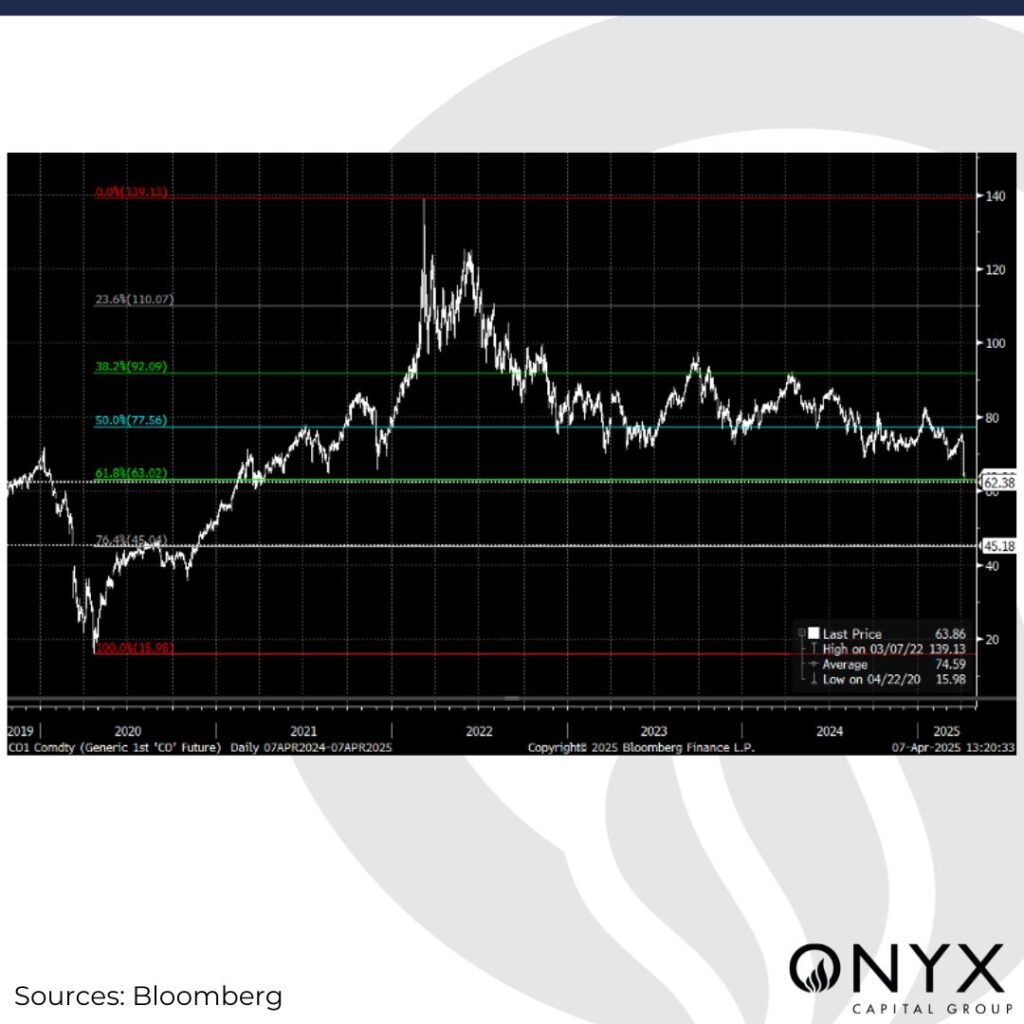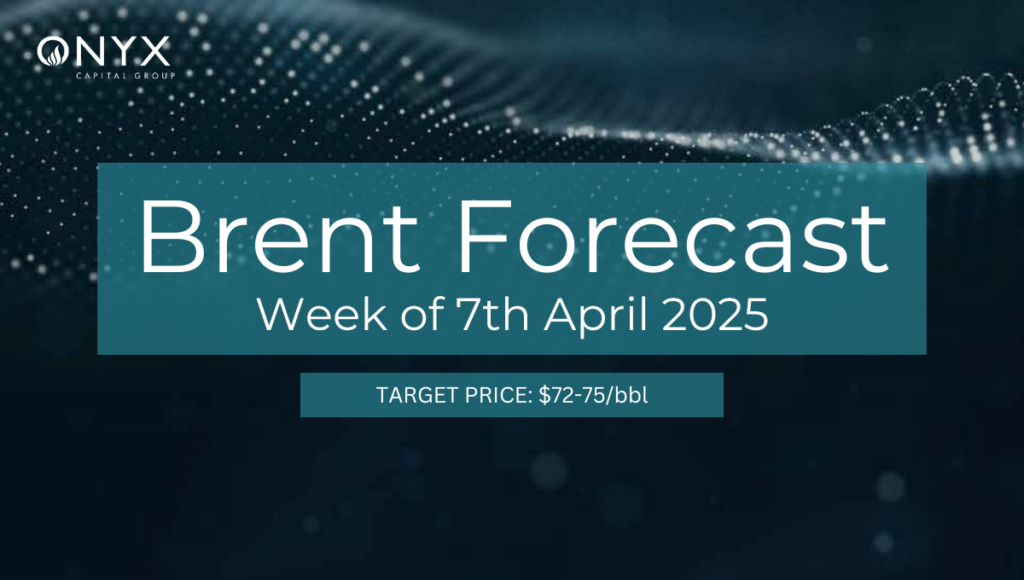Brent: Catching a falling knife
The impact of President Trump’s Liberation Day tariffs, announced on 2 April, came fast and furious, with Brent, alongside equity market indices, tumbling in a free-fall spiral. The scope of US retaliatory tariffs exceeded market expectations and was swiftly followed by similar measures from China. From an intraday high of $75.47/bbl on April 2, the front-month Brent closed last Friday at $65.58/bbl, as the market scrambled to reassess GDP forecasts and, in the case of oil, the potential fallout on demand. The US and Asia, including China, are the key areas where activity is expected to take a significant hit, with more modest impacts in Europe. The rapid unravelling of oil prices was not entirely due to demand considerations, as the day after the US tariff announcement, the OPEC+ producer group surprised the market on 03 April by announcing an accelerated timeline for reinstating barrels from voluntary cuts in May. The announcement was accompanied by more bearish producer news, as Saudi Arabia cut the official selling price of its Arab Light flagship crude to Asia by $2.30/bbl to $1.20/bbl, significantly more than the change in Dubai’s price structure would have implied. When it comes to positioning, the official commitment of traders’ data stops at last Tuesday and does not capture the end of last week’s moves. However, our proprietary CTA model suggests that these market participants were quickly turning net short. So, where do we go from here? No one wants to catch a falling knife, and a liquidity vacuum in a risk-averse environment suggests that price capitulation may not have yet run its course entirely. The range of price outcomes in a higher volatility environment is thus wider. However, the following three factors could mitigate the downside, if not help establish a floor. We expect front-month Brent futures to close this week within a range of $58 to $65/bbl. At the time of writing, front-month Brent was trading at $63.85/bbl.
US macro data
Technical support to the rescue
Tariff retaliation restraint
The fall in oil prices has breached several technical short-term support levels, and traditional longer-term support indicators, such as the 200-day moving average, are well above the current trading price. The search for the next support level needs to go further back in time, and we identify the period in Q1 2021 when the $63/bbl level flipped from support to resistance as one such example. $63/bbl is also approximately the 61.8% Fibonacci retracement level of the rally from April 2020 to the peak of March 2022. Failing that level, the next stop in our view is around $45/bbl, a level we gapped down from in March 2020, and which turned into resistance in August, and near the weaker 76.4% Fibonacci retracement level for the period above. In the short term, the price is at the lower Bollinger band and will likely remain there as long as the RSI momentum indicator remains in oversold territory.
China’s reaction to US reciprocal tariffs was swift and escalatory, with the imposition of a 34% tariff on all US goods. China took a step further by imposing controls on US companies and restricting access to rare-earth minerals. China’s reaction was in stark contrast to its more muted and targeted responses in previous tariff spats with the US. The question for markets this week will be whether more countries adopt an approach similar to China’s or, like Vietnam, seek to negotiate new terms, with the latter proposing a reduction of tariffs on US goods to zero. So far, there has been no tit for tat escalatory action from the UK or the EU to mimic that of China. If this week sees signs of appeasement in the new trade order that President Trump is trying to put in motion, oil, like other risk assets that have declined, may find a reprieve and a floor this week.
The end of this week marks the release of important US economic data, including the CPI on Thursday. While the market’s probability of a forthcoming US recession has risen, leading to expectations of multiple Fed policy rate cuts this year, it will still be down to the data before the Fed makes a move. Fed Chair Jerome Powell has commented that it is “not clear at this time what the appropriate path for monetary policy will be” and that the FOMC “does not need to be in a hurry” to adjust policy. Assuming the inflation data this week moves favourably, that would be one step in the right direction in lowering the hurdle for the Fed to move, considering that Mr. Powell has noted that the progress in inflation has slowed recently. Yet, Jerome Powell also cautioned that beyond a temporary rise in inflation that tariffs may generate, there is the risk of price persistence, and inflation expectations will need to remain anchored. In our view, even if the US CPI print comes below expectations, any uplift in oil prices and equities may, however, be limited.





